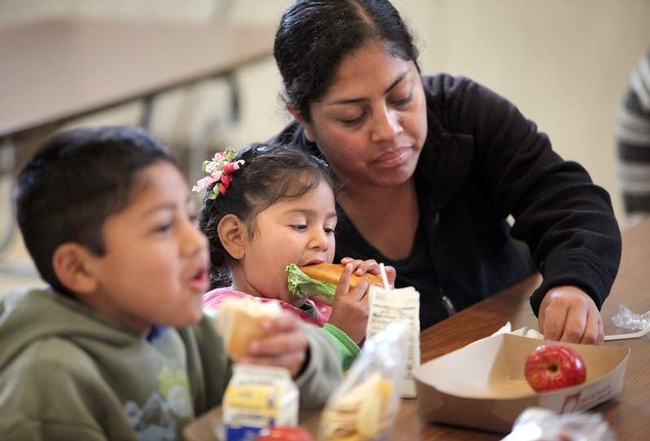
During the five-year period ending in 2014, an average of 19.6 percent of Latinos in Sonoma County lived at or below the poverty line, compared to 9.3 percent of white residents. In 2014, the federal poverty level was $14,580 for an individual and $29,820 for a family of four.
The figures show that poverty increased in Sonoma County for both Latinos and whites. During the previous five-year period, between 2005 and 2009, an average of 15.1 percent of Latinos and 7.4 percent of whites lived at or below the government's official poverty threshold.
The statistics alone do not adequately shed light on the issue of poverty in Sonoma County, said Tim Reese, executive director of Community Action Partnership of Sonoma County, a local nonprofit group that provides services to low-income residents.
“Many of the poor in our community are hidden from our view,” Reese said, adding that some may be agricultural workers who live in “out-of-sight” rural housing, while others may be undocumented immigrants who are living “off the grid” because of their status.
Meanwhile, poverty and living- wage advocates argue that the official poverty threshold doesn't adequately describe the size of the local population, Latino and otherwise, who are struggling economically.
One southwest Santa Rosa mother said the $28,000 a year her husband makes working as a landscaper often leaves the family of four unable to cover their $1,450 monthly rent.
“The rest goes to pay bills like water, electricity, garbage, cellphone,” said Veronica, who spoke on condition that her last name be withheld because she is an undocumented immigrant. “What little is left goes to pay for food. There's no money for extras such as eating out.”
The couple, who are originally from Mexico, have a 19-month-old girl and a 2-year-old boy. Both have asthma, and the boy suffers from a severe skin condition. Veronica participates in Community Action Partnership's AVANCE program, which teaches her crucial parenting skills, while her boy is in a program called Pasitos, aimed at providing toddlers with the necessary tools to succeed in preschool and beyond.
Oscar Chavez, assistant director of the county Human Services Department, predicted that economic disparities between white and Latino residents will have increasingly adverse effects on the local community as Latinos continue to become a larger share of the overall population. Education is the single most important battlefront in efforts to reduce poverty in Sonoma County, he said.
“Latinos earn $15,000 less than whites and are further behind in educational attainment,” Chavez said, citing a 2014 county report, titled “A Portrait of Sonoma County.”
In 2013, 23 percent of Latinos in Sonoma County between the ages of 19 and 24 did not have a high school diploma compared to 3 percent of white residents in the same age group.
“Closing the achievement gap is not only key to help our youth realize their full potential but also crucial to the well-being of our community and economic competitiveness,” Chavez said.
Chavez said that a continued decline in middle-wage jobs has created a “bifurcated job market, where we are seeing wage growth at the top and stagnation at the bottom, leaving little opportunity for the working poor to climb the wage ladder.”
He said that investing in early childhood education, raising high school graduation rates and providing the necessary training for Latinos to access higher-skilled jobs will greatly improve economic opportunities for Latinos in the county.
Veronica said that as hard as life is in the United States, she remains here because she believes her U.S.-born children can have a better life, free of the type of violence currently plaguing Mexico. To that end, she said, she and her children are learning the skills necessary to get ahead.
Source: Published originally on The Press Democrat as Poverty increasing for Latinos in Sonoma byMartin Espinoza, December 28, 2015.